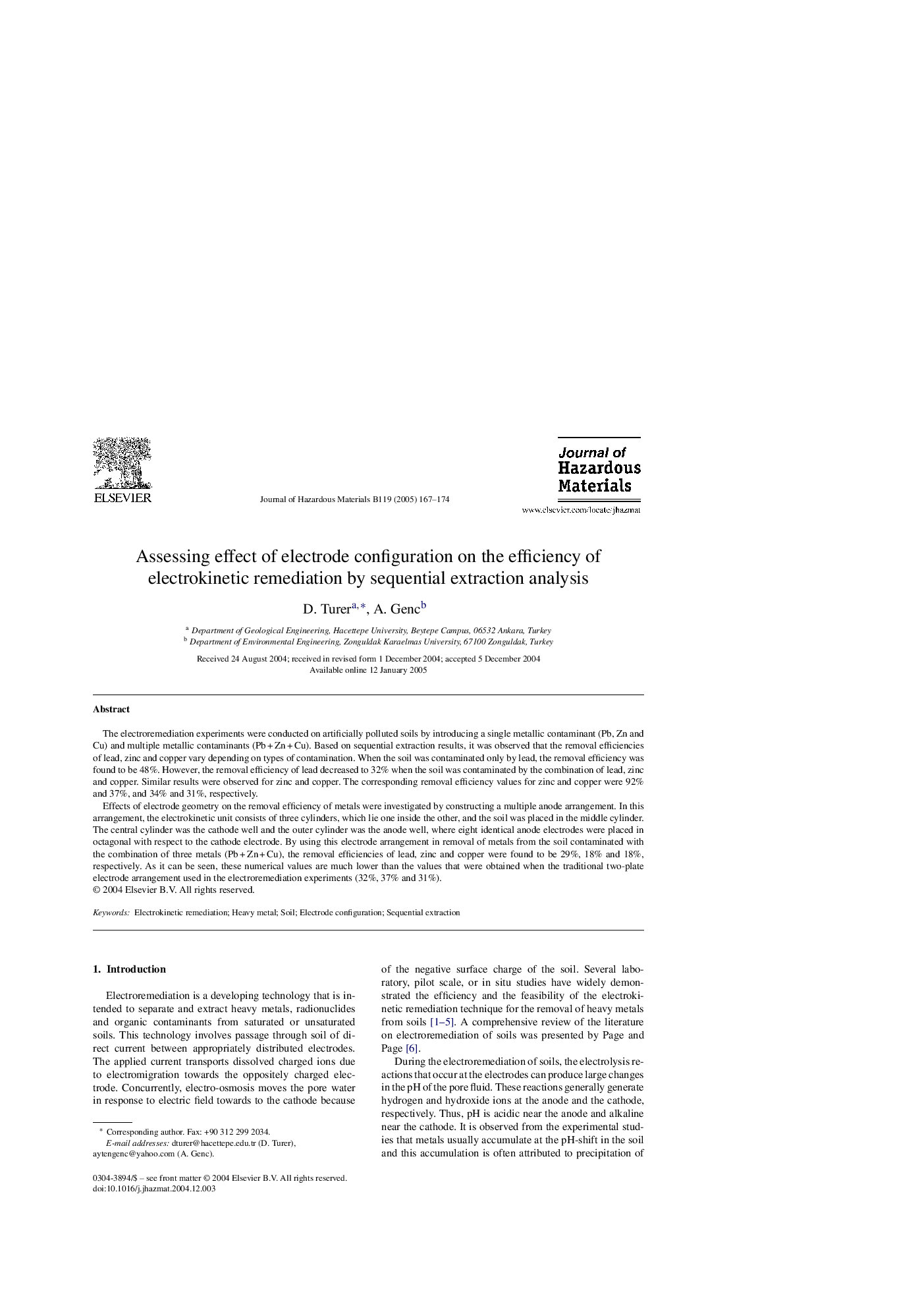| Article ID | Journal | Published Year | Pages | File Type |
|---|---|---|---|---|
| 9674354 | Journal of Hazardous Materials | 2005 | 8 Pages |
Abstract
Effects of electrode geometry on the removal efficiency of metals were investigated by constructing a multiple anode arrangement. In this arrangement, the electrokinetic unit consists of three cylinders, which lie one inside the other, and the soil was placed in the middle cylinder. The central cylinder was the cathode well and the outer cylinder was the anode well, where eight identical anode electrodes were placed in octagonal with respect to the cathode electrode. By using this electrode arrangement in removal of metals from the soil contaminated with the combination of three metals (Pb + Zn + Cu), the removal efficiencies of lead, zinc and copper were found to be 29%, 18% and 18%, respectively. As it can be seen, these numerical values are much lower than the values that were obtained when the traditional two-plate electrode arrangement used in the electroremediation experiments (32%, 37% and 31%).
Related Topics
Physical Sciences and Engineering
Chemical Engineering
Chemical Health and Safety
Authors
D. Turer, A. Genc,
